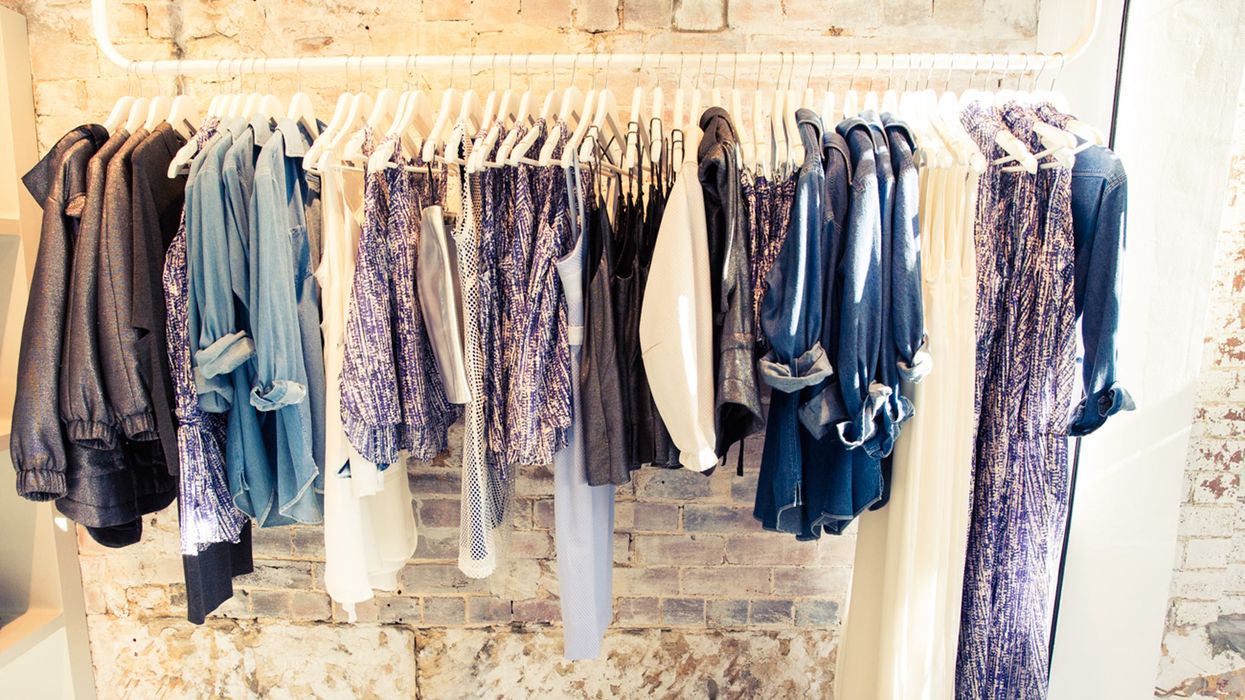Sustainable Fashion: How Eco-Friendly Apparel Is Shaping the Future of Style
As the style sector deals with enhancing scrutiny over its ecological influence, the increase of sustainable fashion offers an encouraging choice that straightens design with eco-friendly duty. boutique fashion. Exactly how does this motion truly influence the future trajectory of style, and what obstacles lie ahead in its prevalent fostering?
Ingenious Sustainable Materials
As the garment industry faces its ecological impact, cutting-edge lasting products have become an essential solution for lowering ecological impacts. Among the most appealing materials are those stemmed from all-natural, sustainable sources, such as natural cotton, hemp, and bamboo. These products not only reduce reliance on fossil fuels however also lessen damaging pesticide use and water consumption. Organic cotton, for circumstances, uses dramatically less water than standard cotton and eliminates the demand for toxic chemicals, therefore preserving dirt health and biodiversity.
Along with plant-based materials, developments in biofabrication have actually brought about the growth of lab-grown fabrics. Mycelium natural leather, stemmed from mushroom origins, offers a naturally degradable and flexible option to animal leather. Its manufacturing leads to significantly reduced carbon emissions and water use, making it an extra lasting alternative for style developers looking for to straighten with eco-friendly techniques.
Recycled products are likewise getting traction, with polyester made from recycled plastic bottles standing for a significant breakthrough. This technology not just diverts plastic waste from seas and land fills however also reduces power usage compared to producing virgin polyester. Together, these products highlight the potential for an extra lasting garment industry, leading the way for environmentally aware style and production.
Eco-Conscious Production
Building on the advancements in lasting materials, the fashion market is additionally re-evaluating its production procedures to further minimize environmental effect. Trick strategies consist of decreasing water consumption, minimizing carbon exhausts, and eliminating harmful chemicals.
An additional vital facet is the reduction of harmful chemicals generally made use of in dyeing and completing fabrics. Eco-conscious suppliers are shifting towards plant-based dyes and waterless dyeing innovations, which not just guard neighborhood communities however likewise enhance employee safety and security. Innovations like digital printing decrease material waste and energy usage, using a cleaner option to typical approaches.
With the improvement of blockchain technology, firms can currently give thorough understandings into their supply chains, guaranteeing ecologically friendly and moral methods at each step. As the need for eco-conscious products expands, makers are obliged to innovate, making certain that the future of fashion is both stylish and lasting.
The Surge of Upcycling
Upcycling, a transformative method in lasting style, involves artistically repurposing discarded materials into new, high-grade items. This innovative technique not only lowers waste however additionally decreases the need for resources, thereby minimizing the environmental effect of apparel production. By reimagining and rebuilding existing things, designers and fashion brand names are able to instill creativity into their collections while promoting environmental duty.

Furthermore, the upcycling movement has empowered independent developers and tiny businesses, who check usually lead in development as a result of their agility and imagination. By taking advantage of the abundant schedule of unused materials, these entities add to a circular economic situation, demonstrating that style can be both lasting and elegant. Through upcycling, the sector takes considerable strides towards an extra responsible and aware future.
Thrift Society's Effect
The growing second hand culture significantly improves the landscape of sustainable style, emphasizing the relevance of mindful usage. This cultural shift urges consumers to welcome previously owned clothing, therefore decreasing the need for new garment manufacturing and reducing ecological impact. Second hand shopping not only expands the lifecycle of clothes yet also reduces the carbon impact related to production, transferring, and dealing with clothing.
A key element of second hand society is its democratization of fashion. By using a vast range of designs from numerous periods at economical costs, second hand shops make fashion easily accessible to a more comprehensive audience. This accessibility cultivates a sense of uniqueness and creativity, as consumers mix and match special items to curate personalized wardrobes without adding to the quick style cycle.
Furthermore, thrift culture advertises circularity in style, lining up with the principles of a circular economy. As more consumers and developers accept thrift culture, the fashion sector is urged to adjust, integrating sustainable techniques to fulfill the expanding demand for eco-conscious alternatives.

Future Trends in Fashion
Style's development is increasingly have a peek at this website formed by sustainability-driven initiatives and technical developments. As customers end up being more environmentally conscious, the sector is reacting with groundbreaking improvements that redefine the future of style. One famous pattern is the surge of digital style, where virtual garments can be put on in augmented fact environments, dramatically decreasing material waste. This change not only deals with the digital-savvy customer but likewise minimizes the environmental impact traditionally related to garment manufacturing.
Additionally, the assimilation of blockchain modern technology offers new possibilities in openness and traceability, enabling customers to validate the sustainability credentials of their garments. boutique fashion. This makes certain liability in supply chains and promotes ethical sourcing methods. 3D printing is yet one more advancement that promises to transform producing processes by allowing on-demand manufacturing, consequently lowering excess supply and waste
In addition, the growth of bio-fabricated products, such as lab-grown natural leather and plant-based fabrics, provides sustainable this options to conventional materials. These developments decrease reliance on animal items and resource-intensive plants. As these innovations develop, they are poised to transform the fashion landscape, merging design with sustainability. The future of style, as a result, depends on a smooth mix of modern technology, advancement, and environmental obligation.
Verdict
The change of the style industry with lasting practices shows a pivotal change in the direction of environmental liability. This evolution not only straightens fashion with environmental sustainability yet also sets a criterion for future fads focused on obligation and technology.
As the fashion market encounters boosting analysis over its environmental influence, the rise of sustainable style supplies a promising option that straightens design with ecological obligation.As the fashion sector grapples with its ecological influence, innovative sustainable materials have arised as an essential solution for decreasing environmental impacts. With each other, these products emphasize the potential for a more sustainable fashion industry, paving the method for environmentally mindful style and manufacturing.
Structure on the technologies in lasting products, the style sector is additionally re-evaluating its production procedures to better lower ecological influence. boutique fashion.Upcycling, a transformative technique in lasting style, includes creatively repurposing discarded materials into brand-new, high-quality products